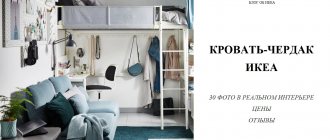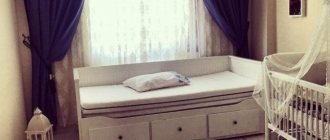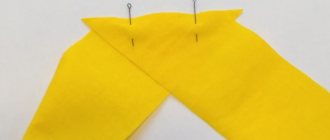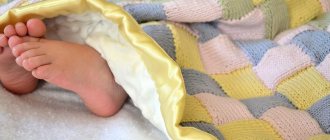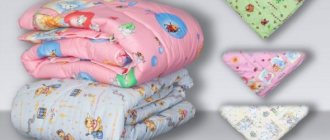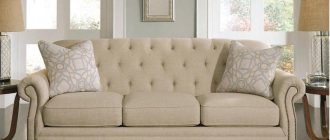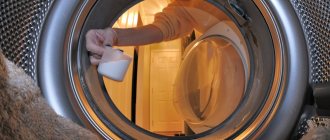Every loving parent wants to provide their child with the best, so before you buy any item for your child, you need to know everything about it thoroughly. Which blanket to choose for a newborn? The question is quite serious, because such a thing should not only warm the baby, but also be safe and comfortable. This article will tell you about all the main nuances of choosing this bed textile.
Basic requirements when choosing
When buying a blanket for a newborn, consider the following basic requirements:
- Seasonality.
- Room temperature.
- Size.
- Lightness and softness.
- Hypoallergenic.
- Moisture exchange.
- Breathability.
Knitted blanket.
When purchasing things for your future baby, focus on the time of year. In winter, buy something warm, and for the summer season, buy something lighter. The temperature in the room where the baby will sleep can be quite high even in winter. Therefore, in such rooms, under a winter blanket, the baby will sleep hot. If the room is warm enough to prevent the baby from rotting, you can use a light summer option.
Blankets for newborns come in different sizes and we will dwell on this point in more detail at the end of the article. The main thing in choosing the right size is to match the size of the crib. If the child was born in the summer, then look for a larger option for the winter, since the child will have grown significantly by this time.
A blanket for a baby, regardless of the season, should be airy and promote a serene rest. In addition, it should be very soft and gentle to the touch. Hard and prickly can cause irritation on the baby’s delicate and sensitive skin.
Hypoallergenicity of any item for a newborn is a must. Buy products made from artificial materials or natural ones that do not cause allergies. It is important to understand that if after using the blanket your baby shows signs of an allergy, you must stop using it and urgently purchase another one.
The product must be made of breathable materials and provide active air exchange. In addition, it should not only absorb moisture perfectly, but also remain dry and not lose heat. With a properly selected product, the newborn will not sweat or freeze.
Try to buy not only beautiful things, but also high-quality ones. Avoid cheap market baby supplies that can be harmful to your baby's health. It is better to choose the necessary item in a company store.
Which blanket is best for a newborn's crib?
First of all, parents must take into account one important fact - the time of year when the child was born. Depending on this, the choice will be different blankets:
- If it is cold autumn or winter, then the following options are suitable for the child: cotton, down, wool or fur blankets.
- If it is a warm spring or summer, then it is better to buy a blanket made of thin fleece or flannel. A nice wool blanket will also come in handy.
At the same time, young parents should understand that when buying a blanket for the summer, they will also have to buy a second one for the winter, and vice versa. Therefore, do not delay your purchase; it is better to buy the necessary set of blankets right away.
Choice for the summer
In summer, do not wrap your baby in a warm blanket. Overheating is even more dangerous for a child than hypothermia. A baby blanket should be very light, almost weightless, made from pleasant soft fabrics, breathable and hygroscopic. Which blanket to buy for a newborn for the summer season?
Baykovoe
Flannelette blankets are made from natural material and therefore are often purchased for the summer. Their advantages include:
- hypoallergenic;
- lungs;
- soft;
- breathable;
- colorful;
- washes well;
- durable;
- inexpensive.
Calico
Calico is considered an ecological material that combines:
- ease;
- durability;
- almost does not wrinkle.
Fleece
A fleece blanket is a knitted fabric. An airy fleece blanket will create a comfortable temperature regime. The advantages of such a product include:
- ease;
- easy care;
- not subject to biological destruction.
- dry quickly.
When choosing a fleece item for a child, you need to know that fleece absorbs dust and therefore can cause allergies.
Woolen.
Familiar from childhood
The flannel blanket has a delicate, soft top layer without lint, which can get into the respiratory tract and irritate the nasopharynx. It is still made in children's (newborn) and adult sizes.
Only natural fibers are used for production. They are very heat-intensive and due to this, despite their low weight, they warm well and retain heat, preventing the baby from overheating and sweating.
Note!
Pillow for pregnant women - TOP 160 photos + video reviews of pillow designs for pregnant women. Properties and purpose of the pillow. Types of fillers and coversSofa decks: TOP-130 photos and videos of sofa deck design options for a sofa and armchair. Features of application, choice of color and material of manufacture
Envelope blanket - TOP 150 photos + video reviews of baby envelope blanket designs. Types of safe fabric materials, colors and prints of blankets
The material does not cause allergic reactions and is easy to clean (machine washing is sufficient). This blanket is popular and relatively inexpensive.
Choice for winter
The main condition for choosing a winter option is warmth and good air circulation. It shouldn't be too hot or too cold under the winter blanket. Which blanket to choose for a newborn for the winter season? Common options for winter include wool, down, synthetic, bamboo and cotton wool.
Woolen
Wool blankets for small children are made from camel and sheep wool. These can be blankets or quilts. Quilted ones are preferable, since the wool in them is evenly distributed, does not bunch up and does not cake after washing. Its advantages also include:
- ease;
- heat;
- durability;
- hygroscopicity;
- breathability.
The disadvantage is allergenicity. If your baby develops an allergy or skin irritation after contact with a woolen product, you should immediately stop using it. Woolen items can harbor moths.
Down
Bird down (swan, goose, loon) is used to fill duvets. It has good quality characteristics:
- ease;
- breathability;
- They keep you warm.
Downy.
It is recommended to use a duvet at room temperatures from +16 to +18 degrees Celsius. If used in a warmer room, the baby may overheat.
What Are Some More Tips for Safe Baby Sleep?
The American Academy of Pediatrics has outlined a list of safe sleep practices that can further help reduce the risk of SIDS:
- Always place children under one year of age to sleep on their back, even during naps.
- Share a room, but not a bed, with your baby for the first six months, and ideally a year
- Provide your baby with a firm mattress that fits snugly into the crib without any gaps
- Use a crib, bassinet or portable crib that is less than 10 years old and meets the standards set forth by the Consumer Product Safety Commission.
- Be wary of product recalls, used cribs, drop-side cribs, and broken cribs.
- Don't smoke or let people smoke near your child
- Offer your baby a sleep pacifier as soon as he is comfortable breastfeeding
- Don't let your child sleep in car seats, strollers, or anywhere else other than their own bed
- Keep pillows, plastic bags, toys and all other items away from your baby's sleeping area
- Be careful when purchasing products that claim to reduce the risk of SIDS, and only use these products if they are rated as safe.
- Keep cords, curtains and other loose objects away from the crib
- Don't sleep in the same bed as your child
The number of deaths from SIDS has decreased significantly since the 1990s due to increased awareness of safe infant sleep practices. The best way to prevent accidents while your baby is sleeping is to make sure everyone caring for your baby follows these rules. Don't hesitate to talk to your pediatrician if you're not sure if your baby is ready to start sleeping with a blanket, or if you have any other concerns.
Link:https://www.sleep.org/is-it-safe-for-babies-to-sleep-with-blankets/
Basic sizes for newborns
How to choose the right size blanket for a newborn? It is selected according to the size of the crib with a small margin. A blanket that is too large in a small crib will disturb the baby. It's hot to sleep under and there's a high risk of overheating.
If the baby is active, then he may find himself covered with his head. In this case, it is advisable to purchase side clamps for the crib. Conversely, a small, narrow and short blanket can constantly slide down, revealing the baby. The choice of the required size depends on the height and age of the baby. The sizes are:
- 80x90 cm.
- 95×100 cm.
- 90x120 cm.
- 100x140 cm.
- 105x115 cm.
- 120×120 cm.
- 110×140 cm.
The standard sizes are 110x140 cm and 100x135 cm, and for cradles - 80x90 cm.
Warm and cheap
For more than half a century, a wadded blanket has not gone out of fashion. It is distinguished by its low cost and high quality product, good absorbency, and hypoallergenicity.
The only drawback is the sensitive weight, so such products are not purchased for those who are too small. Important: the material is highly flammable.
Note!
Children's blanket: criteria for choosing a blanket for children. A variety of sizes, materials and patterns of children's blankets. Rules for caring for a child’s blanket (photo + video)Bedspread for a sofa: TOP-140 photos and videos of design options for a bedspread for a sofa. Features of the use of the bedspread, choice of color and material
Wool blanket: options for using wool blankets. Advantages and disadvantages of wool, varieties of sizes and shapes of blankets (photo + video)
Popular manufacturers
When choosing a blanket for your baby, give preference to manufacturers focused on producing only high-quality items. Among the main ones we can note:
- “Fleece Factory”, Russia – winter options for bedding made from camel, alpaca, and sheep wool.
- “Mona Lisa”, Russia – bright fleece blankets with images of cartoon characters.
- Naturek, Russia - high-quality children's bedding lines filled with silk, wool, down, bamboo, and eucalyptus fibers.
- “Ermolino”, Russia – blankets made from natural raw materials.
- TAS, Turkey - products for small children, made of synthetic filler, in beautiful bright colors.
- MEYCO, Germany – high-quality durable cotton blankets.
- “Kajka”, Poland – a collection of cotton children’s blankets with padding polyester filling.
- Magic Wool is a collection of blankets and rugs made from sheep and camel wool.
- MuzaNoche has released a line of BabySilk textile items, which uses natural silk.
- Primavelle - produces high-quality children's textiles using all the materials described in this article.
- “Happy Linen”, Ukraine – uses natural materials with linen filling in the manufacture of blankets.
A simple way to swaddle a baby
How to wrap a baby in a blanket without a belt: It is not always convenient to tinker with ribbons and folds, and practical mothers prefer to use a proven method in which the blanket is wrapped in the same way as a diaper. This technology provides reliable fixation and is perfect for slightly older, mobile children who strive to get out of anything that limits their mobility. Thus, you can swaddle your baby in a blanket only if it is flexible and thin. Thick fabrics with insulation made from synthetic padding polyester, down or holofiber are not suitable. It is optimal to use a flannelette, wool or fleece blanket.
If a young mother has experience in swaddling, then she needs to follow a familiar algorithm:
- The blanket needs to be divided diagonally . If it has a rectangular shape, then the large edge should be located to the right of the mother. The baby's left hand must be pressed to the body and the right corner should be folded, creating a lapel along its upper edge. Then you need to tightly clasp your left shoulder and arm, then tuck the remaining edge under the back, then you need to smooth out the folds under the baby.
- It is necessary to form a lapel along the upper edge of the left corner and wrap it along the right shoulder . The baby's arms should be pressed to the body. The free end is tucked under the back. The legs are pressed so that they straighten. The bottom edge of the blanket must be unfolded and covered with it up to chest level. If the blanket is large and reaches the neck and face, you need to make another lapel.
- You need to tightly wrap the body with the right end of the loose cut . If the need arises, it must be brought through the back to the chest. You need to wrap the body with the left end of the free edge and tuck its corner under the fold. If you properly wrap your baby in a blanket, an additional layer of insulation will form around the baby's head.
How to care
Before using the blanket for the first time, it is recommended to unroll it and ventilate it to remove foreign odors. It will straighten out and become more magnificent. Each type of product has special care rules.
For example, cashmere options are washed by hand, woolen ones are not wrung out, dry cleaning is preferable for down items, and airing is preferable for silk items. To ensure that the product lasts longer, you must follow the care instructions indicated on the labels. To make your blankets less dirty, use duvet covers.
It is easier to care for a synthetic item than a natural item. Natural products are more difficult to wash and dry.
Which blanket is best for a newborn is up to you to choose, the main thing is that it is safe and brings coziness and comfort to the baby.
Feather
Everyone is familiar with high-quality, warm duvets that are lightweight and provide maximum comfort while sleeping. The average service life of such a product is 20 years, so when choosing a blanket for a child, focus on adult sizes.
Down may contain allergens and small insects and requires periodic shaking, which can affect the child’s health. Carefully study the label and the rules for caring for the product, then your child will be securely covered at night and warm.
Open face
Swaddling an open-faced baby in a rectangular blanket
- The blanket is laid out diagonally. The edge is folded inward. A fold line is created.
- We place the baby closer to the top line.
- We wrap the head with the top part of the blanket. Press along the ears.
- The edges straighten out. We wrap the right one around the child.
- Cover with the bottom.
- We turn it with the left side.
- We fix it.
If it's hot
Free changing with closed handles
Do not use undershirts, shirts, or bodysuits. It is worth limiting yourself to one thin diaper - the baby will feel comfortable. It is better to use partial swaddling. The arms remain free, the legs are swaddled. Not tight. Now it's better to put on a shirt.
- We tuck the edge of the diaper.
- We place the baby in the middle. The fold line is located near the shoulder blades.
- Cover with the right side and tuck.
- Straighten out the folds. We cover it with the left one and tuck it in.
- The remaining part is covered from bottom to top. Straightens out.
Free changing with open handles
The little one is afraid of the movements of his own hands - swaddle him completely, freely.
Pay close attention to your toddler's diaper. Change it in a timely manner, wash your child, and wipe dry with a towel. Use powder or a specialized cream. Arrange air baths - excellent prevention of diaper rash and prickly heat.

